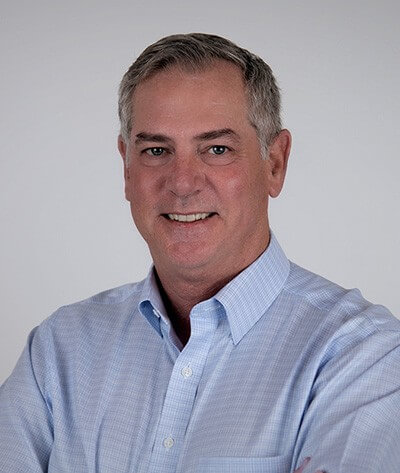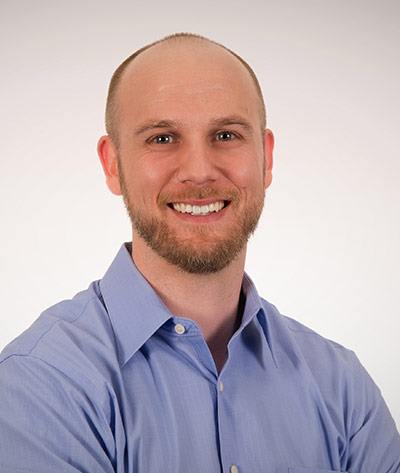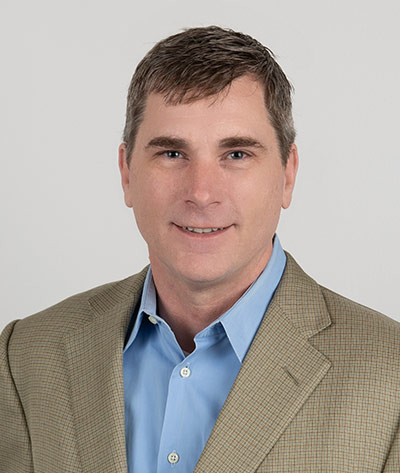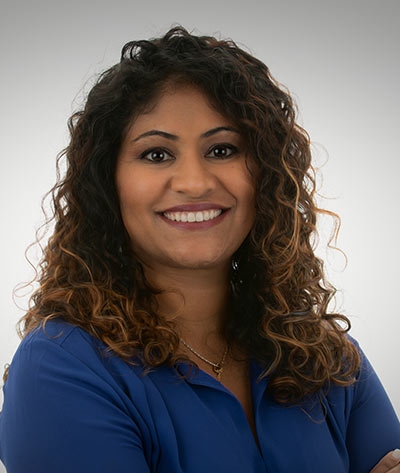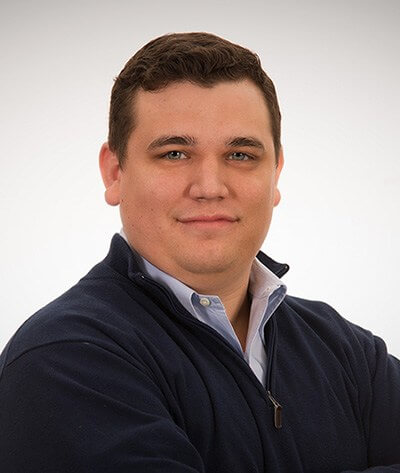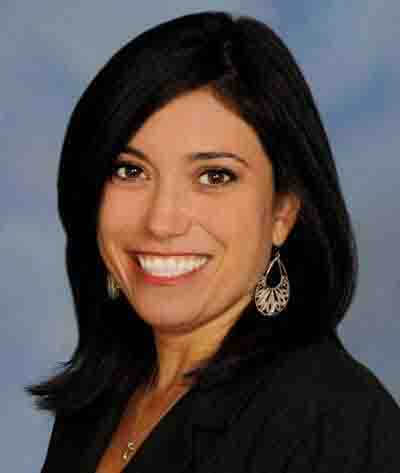Special Report

“When you look at a city, it's like reading the hopes, aspirations, and pride of everyone who built it.”
–Hugh Newell Jacobsen, American architect (1929-2021)
DALLAS—In the annals of popular culture, Dallas will forever be associated with oil, a connection cemented in no small part by the enormous popularity of the eponymous 1980s soap opera Dallas, whose main character J.R. Ewing was based on a real-life Dallas oil billionaire. But from its origins as a trading post in 1841, Dallas has always been more about commerce with a capital C than any particular industry sector.
In 1873, forward-thinking politicians secured a spot for the fledgling town (population 3,000) as a railroad crossing, spurring outward growth and establishing Dallas as the economic and cultural hub of the Southwest. This was considered “unprecedented for a city without a major river or seaport,” marvels the Museum of the American Railroad.
Building on that success, Dallas continued a push into logistics that endures to this day, leveraging rail, highway, and airport investments to become one of the most connected cities in the world.
Today, Dallas faces another crossroad.
Population is surging, and the economy is booming. But embedded in the success story is a paradox. An increasingly vital center for commerce in the United States and beyond, the Dallas-Fort Worth metroplex is a sprawling polycentric region that has continuously pushed development away from its own central core.
As a new era of city building gets underway, Dallas is facing what may be its most pressing challenge and biggest opportunity: how to reconcile the city’s dynamic, outward-looking growth model with a more strategic and inclusive urbanism.
The Great Dallas Migration
Fifteen companies established their headquarters in Dallas-Fort Worth in 2022, according to the Federal Reserve Bank of Dallas. This is down from 2021, which saw a record high of 26 corporate headquarters relocated to the Dallas metro area and 13 headquarters announced sizable expansions.
The city ranks fifth among the nation’s fastest-growing economies, behind Seattle, San Francisco, Austin, and the Raleigh-Durham area.
For a major city, Dallas fared relatively well during the COVID-19 pandemic, having avoided the lockdowns that crushed business activity in many metros around the country.
Fastest-Growing Economies in the United States in 2022
Individuals and families, too, are flocking to the metroplex.
Dallas is now the fifth fastest-growing city in the United States; the Northern suburbs of Allen, Frisco, McKinney, and Plano added people at an even faster clip, with Collin and Denton Counties ranking No. 2 and No. 6, respectively, among the nation’s fastest-growing counties. (Allen and McKinney are in Collin County, Frisco spans Collin and Denton counties, and Plano is in Collin and Dallas counties.)
In 2022, the metroplex population reached 8 million, representing an increase of around 23% from 2010. More than 11 million are projected to live in the area by 2045, according to the US Census Bureau.
Business leaders credit the migration to a perfect storm of economic factors, such as a lack of income tax and reasonable cost of living, noted Megan McFarland, partner in charge of the Moss Adams Dallas office and lead for the Oil & Gas Practice. Access to a skilled workforce and a relaxed regulatory environment add to the attractiveness of the region.
“You can’t draw people here with the weather or scenery, so we have to draw them with other things,” said McFarland, a Dallas native who lives in Allen. “People want to live here and move here because it’s a good value.”
The Dallas Value Proposition
That value proposition improved as sky-high housing prices and burdensome regulations drive residents and companies out of coastal cities into Texas, said Jeff Needs, former director with the Moss Adams Real Estate Practice, from where a steady stream of companies—Aviatrix, Charles Schwab, and DZS, to name a few—have decamped for Dallas.
“The Texas advantage has always been that it's a can-do state and has money,” Needs said. “They’re doing well: They stayed open, they’re pro-business, and the taxes are favorable.”
The Dallas Edge: A Diverse Economy and Business-First Culture
Other cities in Texas enjoy the same regulation-light business orientation and affordable living advantages. But Dallas claims an additional set of benefits that help explain why more people moved to the metroplex in the past few years than to other large metropolitan areas in the Lone Star State.
“Houston has energy; Austin has tech,” said Alex Cotter, a senior tax manager in the Moss Adams Dallas office who works primarily with food and beverage clients. “Dallas has a diversified economy.”
Born in Dallas, Cotter moved away when he was 10, then returned in 2013 after a round of number-crunching with his father convinced Cotter that the metroplex was about as “recession-proof” as a city could get.
The varied industry base here ensures stability even in rocky economic times, Cotter said, a feature of the business landscape that holds true today.
In 2022, Dallas ranked the third-most diverse economy in the country. Established industries here include logistics and trade, energy, technology, and advanced and other professional services in addition to manufacturing, aerospace, defense, hospitality, telecommunications, life sciences, and health care, among others. Dallas also has a reputation in the Southwest as a financial services hub—the Federal Reserve has a bank here—and the sector is now the third-largest in the country.
A Diverse Economy
Charlie Shannon, a partner in the Dallas office of Moss Adams who works with financial institutions and specialty finance companies, offers another spin on what gives the city an edge in the economic competitiveness game. Austin is known for food and music, while San Antonio is known for the Riverwalk.
But the metroplex culture, Shannon and others said, promotes a business-first orientation, defined by well-established networks and a bootstrapping entrepreneurial style that promotes new business creation even as venture capital flows dry up.
Examples abound.
Founders in the Dallas area tend to start companies without venture capital investment, which is unlike Silicon Valley, Austin, and other tech hubs, said Vance McCollough, a partner in the Moss Adams Dallas office who works primarily with technology clients.
That model appeals to private equity firms coming to the city seeking acquisitions, McCollough said. “They describe that as efficient capital: Someone hasn’t raised tens of millions of dollars and burned through it all. They’ve actually built a business.”
After the telecommunication bubble burst in 2001, the Dallas tech ecosystem, dominated by telecommunications as the home to Nokia, Samsung, and AT&T, began to diversify into software, mostly in the B2B space, explained McCollough, an empty nester who lives with his wife in a townhome in Uptown, a neighborhood near downtown known for its lively restaurant and bar scene.
Among other factors boosting the city’s software ecosystem is “exponential growth” in the University of Texas Dallas and Arlington systems, along with an influx of international students, McCollough added.
It’s difficult to discuss the technology sector without mentioning banking uncertainty. While Silicon Valley Bank had a significant presence in Dallas, it wasn’t without competitors that also serviced the technology sector, according to McCollough. “The collapse of SVB isn’t generally expected to hurt the growth prospects of the Dallas technology ecosystem.”
A Small Business Destination
Across industry sectors, business leaders describe a similar trifecta transforming industry sectors: diversification, a networked do-it-yourself culture, and unrelenting growth.
Increasingly, locally owned businesses are in favor.
In the restaurant category, one of the fastest-growing segments is the independent restaurant and craft beer and spirits industries, Cotter said. “We’re seeing fewer chains, more local restaurant groups, and one-off independently owned venues.”
While Dallas is a huge city, its culture of opportunity, along with supportive business networks (not to mention thousands of new residents clamoring for chef-driven dining experiences) drives the city’s homegrown entrepreneurial ecosystem.
“People who want to start their own restaurant, distillery, or brewery can give it a shot and be creative and take a chance on something big,” said Cotter, who lives in Celina, where the fields surrounding his home sprouted 200 new houses in the past couple of years.
So many people have moved to Celina in the past 20 months that the “support services,” restaurants, banks, gas stations, have yet to move in, he said. “They’re coming. It’s crazy growth.”
Corporate America Expands Its Footprint
As entrepreneurs churn out small businesses, the city is growing its reputation as a place where corporate powerhouses roam—and then settle.
The metroplex is home to 23 Fortune 500 company headquarters; 45 in the Fortune 1000. The businesses relocating and expanding here represent all manner of industry sectors, but a high concentration falls into the financial services category, with JP Morgan, Vanguard, and Wells Fargo all adding or announcing new satellite offices around the region.
“The companies moving into Dallas require money and resources,” said Kalgi Ganatra, a senior manager in the Moss Adams Dallas office who serves clients in the financial services sector. “It harbors the environment for banks, credit unions, insurance companies, and fintech. They’re following the growth.”
“Despite the uncertainty in the banking landscape, the need for financial institutions doesn’t go away,” Ganatra added. “I see this as an opportunity for innovation. Fintech in particular is a product of innovation related to challenges in the market that people are trying to solve.”
Another notable case in point: New York-based financial giant Goldman Sachs is slated to break ground on a $500 million office project near downtown Dallas this year. The 980,000-square-foot project will anchor an 11-acre, mixed-use redevelopment planned by Hunt Realty Investments, a centralized real estate investment management company owned by Hunt Consolidated, Inc., which is the flagship entity of the Ray L. Hunt family of companies based in Dallas.
The buildings, which comprise the largest office development in Dallas in decades, are expected to open by April 2026.
Energy Heirs Diversify into Real Estate
The Goldman Sachs project highlights one of the most significant trends reshaping the Dallas economy: the union of oil and real estate. (Hunt Consolidated companies also include oil and gas exploration and production in addition to real estate.)
Unlike Houston, home to the big oil conglomerates, energy companies in Dallas have their roots in family offices. Amid a generational business and wealth transfer, heirs of these family offices have started to invest in more diversified industries, said McFarland, a former assistant controller in the energy industry.
She pointed to the ubiquitous real estate projects reshaping the region.
“A lot of this is oil money,” she explained. “The children and grandchildren of families that would have invested in oil are now moving into tech, real estate, and utilities. So if you look at the metroplex, that’s part of the history that created the city. It’s a huge component of the Dallas economy.”
Real Estate Moves Up, Out, and Into Mixed-Use
The modern-day Dallas real estate boom combines traditional home building with new forms of development aligned with changing demographics and the shift toward remote work.
Just as Dallas is nurturing business magnates as well as entrepreneurs, legacy professional service firms, and next-generation food and tech companies, so too are real estate developers targeting a variety of housing types and styles, both traditional and innovative.
Fueled by a seemingly endless supply of developable land, one frontier is a new crop of outer ring subdivisions springing up in increasingly remote parts of the metroplex.
Simultaneously, builders are breaking ground on more diverse, connected, and human-scale communities—a direction that’s in part a response to the COVID-19 pandemic and remote work.
“The communities getting built are live, work, and play communities,” said Aidé Apodaca Gonzalez, an assurance director in the Moss Adams Dallas office who provides audit and advisory services to clients in the commercial real estate industries. “Mixed-use is the mindset.”
She pointed to Legacy West, a $3 billion mixed-use development in Plano that includes corporate offices, multifamily high-rise living, retail shopping, and restaurants. The development sits on the southwest corner of the Dallas North Tollway and Sam Rayburn Tollway, two of the many highways expanded over the past decade.
Fields West, another Hunt Realty Investments project, will be located near the new PGA headquarters in Frisco, and will include several thousand apartments, hotels, and office space. Frisco is already home to The Star in Frisco, the headquarters and practice facility for the Dallas Cowboys, as well as Toyota Stadium, home of the FC Dallas, the city’s Major League Soccer team.
And that isn’t all that Frisco will have to offer.
In the latest sign that the Dallas area has become a top destination for individuals and businesses: In January 2023, Universal Resorts announced it was building a Universal Studios theme park in Frisco, expected to draw millions of visitors annually. “Frisco is attracting everything,” McCollough said. “Literally. Everything.” In fact, the Dallas Cowboys now call Frisco home.
For many newcomers, the Dallas dream is to buy a single-family home with a yard, all at an affordable price point. But with more people working from home, expectations for multifaceted living and working environments are growing, as is the demand for high-rise apartments.
“We’re seeing a lot of multifamily assets,” Gonzalez observed. In fact, the Dallas-Fort Worth area leads the nation in apartment construction with more than 50,000 units currently being built; this will increase the current apartment inventory by 7.5%. Half of those units are slated to be complete in 2023.
Mixed Use Extends to the Office Market, Too
Changes in the office market also support mixed-use development trends.
In 2022, the corporate headquarters relocation rush ebbed, and office development activity slowed as construction costs increased and companies continued to rethink their need for square footage in the wake of remote work.
Office space is sitting empty as vacancy rates remain high, said Cody Schoenig, a partner in the Dallas office of Moss Adams. “My clients in real estate understand the situation and are retooling for the future.” (Office vacancy rates in Dallas clocked in at 24%, according to a Q4 2022 report put out by JLL, a Fortune 500 commercial real estate firm.)
Before the pandemic, one of Schoenig’s commercial real estate clients started converting its portfolio to a co-working model, creating a string of flexible workspaces in suburbs across the metroplex. The business model catered to people who didn’t want to drive downtown, but the conversions accelerated as the pandemic boosted demand for workplace solutions closer to home.
“Hybrid work is here to stay,” Schoenig said. “And we’re going to see a sea change in the way office space is used.”
Along with mixed-use development, Dallas is also pushing forward with new public transportation infrastructure. The Silver Line, a $1.89 billion commuter rail line, for example, will connect Plano with the Dallas/Fort Worth International Airport.
Many newcomers to Dallas are used to living in environments that aren’t as car dependent, said Cotter, whose sister works for Goldman Sachs, which will eventually relocate New York City employees to the new Dallas location. The region’s “biggest single need,” Cotter believes, “is mass transit.”
Reimagining Downtown: A Debate
As the suburbs develop, the city is also turning its attention to its central core, where billions of development dollars are in the pipeline.
Views differ on the merits of the massive investment project, fueling a debate that goes beyond individual buildings to address the core identity of the metroplex: a sprawling cephalopod of an urban organism with not one beating heart but at least three or four and more like five or six.
The language people use to describe the metroplex helps visualize its unusual form: Instead of an “urban core,” McFarland said, people refer to Interstate 635 as the original Loop, which at one time was considered the limits of Dallas but it has since been supplanted by another Loop, the George Bush turnpike, even further north.
Hubert Zajicek, co-founder and CEO of Health Wildcatters, a health care startup accelerator that’s also a client of Moss Adams, elaborated on that description.
The distances in Dallas are so huge that it’s difficult for people to travel from one part of the metroplex to another. “What has risen out of that is that multiple sizable nodes can be sustained and built up independently of one another." The strength of the city is its distributed nature, Zajicek said.
Others disagree with that assessment, arguing that changing times call for a different mapping of the metroplex, both real and conceptual.
Suburbs like McKinney and Allen evolved into bustling dining and entertainment destinations in their own right, Ganatra said. So has downtown Fort Worth. And available land will always make the suburbs a draw for companies looking to build out corporate campuses.
“But if you want to bring in top talent,” Ganatra said, it's likely “to be a younger crowd, especially in tech, and they’re going to want to be near downtown Dallas.” Amid explosive growth, urban development isn’t an either/or, Cotter added. “For the suburbs to thrive,” he said, “downtown has to thrive as well.”
Crime and homelessness remain persistent roadblocks to getting more people downtown. But even skeptics acknowledge improvements.
Twenty years ago, only a few hundred people lived downtown, and the central business district emptied after 5 p.m. Today, 15,000 people and counting call the district home, construction is rife, and public spaces like the formerly “generic” farmers market, according to Ganatra, have been revamped to include eateries, high-end organic food purveyors, and boho chic shops.
“You go to the farmers market, and it’s packed—just packed. It’s not just people buying groceries; people are hanging out in the restaurants, in the shops,” she said. “There has been a definite shift in how people are thinking about downtown.”
In Addition to Mixed-Use, Offices Convert to Residential Use
Framing downtown redevelopment as part of the region’s innovation economy is a critical part of that shift.
To wit: Dallas is moving full steam ahead with plans to repurpose existing office towers into residential units, a real estate model that has become more popular since the pandemic.
At least five office-to-luxury apartment conversions in the central business district are underway, according to JLL, encompassing more than 2-million square feet and potentially cutting the downtown office vacancy rate by more than 6%.
The days of downtown restaurants drawing in office workers four to five days a week are long gone, said Emily Knight, president and CEO of the Texas Restaurant Association and a Dallas resident.
Knight believes the district is on a path of becoming an “experiential living” neighborhood, supporting nightlife, art venues, and restaurants, along with new parks and other public amenities.
But realizing that vision, she said, hinges on the office conversions. “That’s going to be really interesting to watch.”
What Progress Looks Like
Already, redevelopment in other central core neighborhoods is well underway.
Connected to downtown by the enormously popular Klyde Warren Park, a 5.2-acre greenspace built in 2012 over a former freeway, Uptown continues to draw residents and businesses, registering the highest net absorption in the office market in 2022, according to JLL.
Known for its live music scene and eclectic restaurants, the Deep Ellum neighborhood has become a desirable office address and a magnet for tech company relocations.
Deep Ellum is one of the city’s compelling growth stories, said Justin Laswell, an audit partner in the Dallas office of Moss Adams. He said one of his clients recently developed a mixed-use project encompassing two office buildings, a hotel, and retail spaces.
Building on the success of these redevelopment projects, the city is planning a spate of new developments and infrastructure projects in the south part of downtown, with the twin goals of bringing more people to the area and spreading the wealth in the northern suburbs to low-income neighborhoods in South Dallas.
Dallas is one of the nation’s most racially diverse metro areas—and getting more so. Nevertheless, racial division persists across the metroplex, and economic indicators lag in South Dallas.
Closing the wealth and opportunity gap in South Dallas has become imperative, noted Gonzalez. “It’s on everyone’s mind. It’s an important part of growing Dallas.”
And there are signs of progress.
The DEC Network, an entrepreneurial support and networking organization, continues to expand its programming in South Dallas. The not-for-profit recently partnered with Charles Schwab on an initiative to help Black founders bring a business to market.
The Dallas School District is expanding its popular transformation schools initiative, aiming to reverse white flight through an academically accelerated curriculum. And in late 2023, the city will unveil Deck Park, a five-acre South Dallas greenspace over Interstate 35E that will knit together Latino neighborhoods divided by the highway.
On the real estate side, city tax incentives continue to draw new investment. For example, the planned Newpark Dallas District, a tech-centered mixed-use development south of City Hall, will net millions of dollars in grants and tax breaks in exchange for promises of job growth.
In another significant sign of progress, voters in the fall of 2022 approved a $2 billion expansion of the Convention Center featuring 1.2 million square feet of exhibit and breakout space. This project will prove to be the biggest infrastructure ever to spring up on the south side of downtown.
And with that, the Dallas travel and tourism business has staged a comeback. The new facility, to anchor yet another redevelopment district, will enable Dallas to better compete with big cities for premium convention center opportunities, said Sino Varghese, an assurance partner in the Moss Adams Dallas office who works primarily with energy-related businesses.
Dallas is centrally located, said Varghese. Nevertheless, most of the big conferences bypass the metroplex for Las Vegas. The new facility will help grow market share for the meetings industry while revitalizing surrounding buildings and creating a more integrated people-friendly urban environment.
The Convention Center is “a big deal,” added Laswell. “That’s where growth downtown will start to happen.”
Metroplex 2.0
Amid signs of an economic slowdown, some in Dallas are asking: If you build it, will they (really) come?
Another question: How much growth can one metroplex absorb?
Around the region, a framework responding to both inquiries is taking shape if not entirely coalescing. Call it metroplex 2.0: an effort to harmonize the flexibility and independence baked into the region with integrated approaches to urban development that bolster changing social and economic priorities, inside and outside the city.
Around the middle of 2022, Schoenig attended a panel discussion in which the mayors of Arlington, Frisco, Addison, Fort Worth, and several other suburbs discussed incentive packages to lure new business and development.
“What I found really interesting is that the panelists talked about how all of the suburbs are interconnected,” Schoenig said. “Everyone has started to realize Dallas-Fort Worth is a big place, but it’s all interconnected; so working with each other, taking the cities out of silos, and moving toward a more regional approach is what's best for Dallas.”
Echoing that sentiment, McFarland said it’s important “we don't race against ourselves.”
Infrastructure projects don’t happen for free, McFarland said; they’re funded by bonds and lead to property tax increases. “The reason people move to Dallas is because it’s a good value. So part of looking at all the projects we’re doing is making sure we’re not moving out of that realm of affordability.”
Tamela Thornton, executive director of the Dallas-Fort Worth District Council of the Urban Land Institute, offers yet another variation on the theme.
“For Dallas, what COVID did is force more serious introspection around the utilization of existing assets and how those all come together,” she said. The biggest challenge “is improving the connectivity between the places where people are living.” (The Loop now refers to a pedestrian and bike trail as well as a highway. The 50-mile network is intended to connect neighborhoods, green spaces, and economic opportunity, “creating a stronger and more united Dallas.”)
More than a century ago, Dallas founders parlayed the city’s rail assets into one of the world’s largest cotton markets. Today, business and civic leaders aim to leverage economic development to support local communities as well as global markets to unleash a new era of diversified business growth by connecting all of Dallas to the riches of the city.
And all this without losing sight of the signature qualities that put the metroplex on the map in the first place.
“Whether it’s autonomous cars or converting office towers to residential,” said Needs, from his vantage point in Silicon Valley, “Dallas, Texas, can do it faster, better, and cheaper.”
Thank you to our outside contributors:
- Emily Knight, president and CEO of the Texas Restaurant Association
- Tamela Thornton, executive director of the Dallas-Fort Worth District Council of the Urban Land Institute
- Hubert Zajicek, co-founder and CEO of Health Wildcatters
- Professionals at JLL, who provided data

